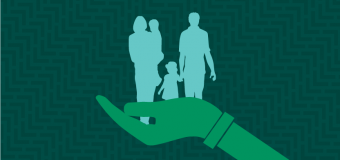Critical Issues Affecting LGBT Homeless Youth
Because they are often without a family to turn to, LGBT homeless youth are at risk of mental health issues, substance abuse, crime, and victimization. According to the On the Streets report, “The instability of homelessness causes physical and emotional stress for homeless youth. When combined with the stigma of a gay and/or transgender identity, this stress can cause youth to experience mental illness.”
The same report notes that “gay homeless youth were more likely to suffer from major depression than heterosexual homeless youth, and lesbian homeless youth were more likely to have post-traumatic-stress syndrome than heterosexual homeless young women.”
These mental health risk factors can increase the likelihood of risky behaviors like substance abuse and unprotected sex. According to the Seeking Shelter report, “42 percent of gay homeless youth abuse alcohol compared to 27 percent of heterosexual youth,” and intravenous drug use is significantly more common than among heterosexual homeless youth. Child Trends reports that 58 percent of LGBT youth reported having been sexually victimized as well.
Living a homeless or transient lifestyle can also lead to crime. The Seeking Shelter report notes that family rejection and involvement in the juvenile justice system are “undeniably intertwined,” and leaving home because of family rejection puts youth at a higher risk of involvement with the juvenile justice system in the future. “This is in part because running away from home is often a status offense that triggers judicial intervention,” the report explains.
Perhaps most significantly, the report notes that homelessness, system placement, and involvement in the justice system may be cyclical: “Incarceration and involvement in juvenile justice systems for these youth is caused by the criminalization of homelessness itself … LGBT homeless youth may thus be both driven into homelessness because of their relationship to juvenile justice and child welfare institutions, and are driven back into these systems due to their lack of housing.”
Taking Action
When the True Colors Fund asked service providers what the most critical needs were for LGBT homeless youth, the nonprofit found that housing and identity-related support were the most crucial. With no federal programs addressing LGBT youth homelessness, organizations across Massachusetts are stepping in to make a difference. The following are some of the resources available to LGBT homeless youth in the state.
- Safe Spaces for LGBTQ Youth: This program collaborates with state and community agencies to provide services that are specifically needed by the LGBT youth population. They “work to promote self-esteem, increase social connectedness and resilience, and decrease risk for suicidal behaviors … [in] a setting that provides safety, support, and allows youth to be their whole-selves within the space.”
- Youth on Fire: Youth on Fire is a drop-in center that serves youth between the ages of 14 and 24. It offers “hot meals, clothing, showers, and laundry facilities, as well as weekly medical care, mental health counseling, and referrals to community resources.” Youth on Fire is part of the Cambridge Cares About AIDS program.
Human Services Education at Lesley University
For those looking to make a positive impact on the issue of LGBT youth homelessness, earning a degree in human services is an ideal place to start. Lesley University’s online Human Services degree provides students with the knowledge and skills required to serve this at-risk population. It prepares graduates to make a difference in the lives of children, adolescents, and adults across human services settings.
